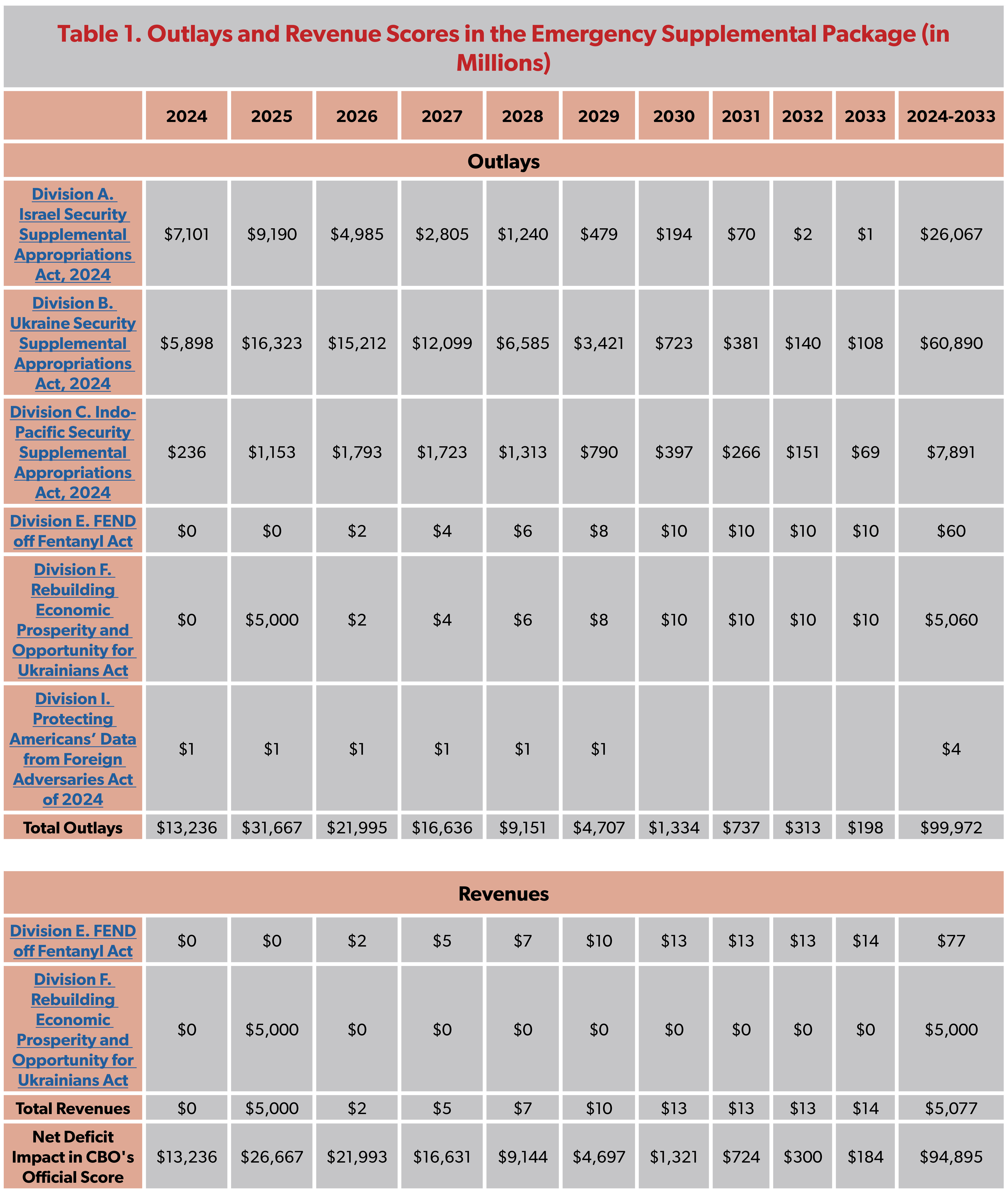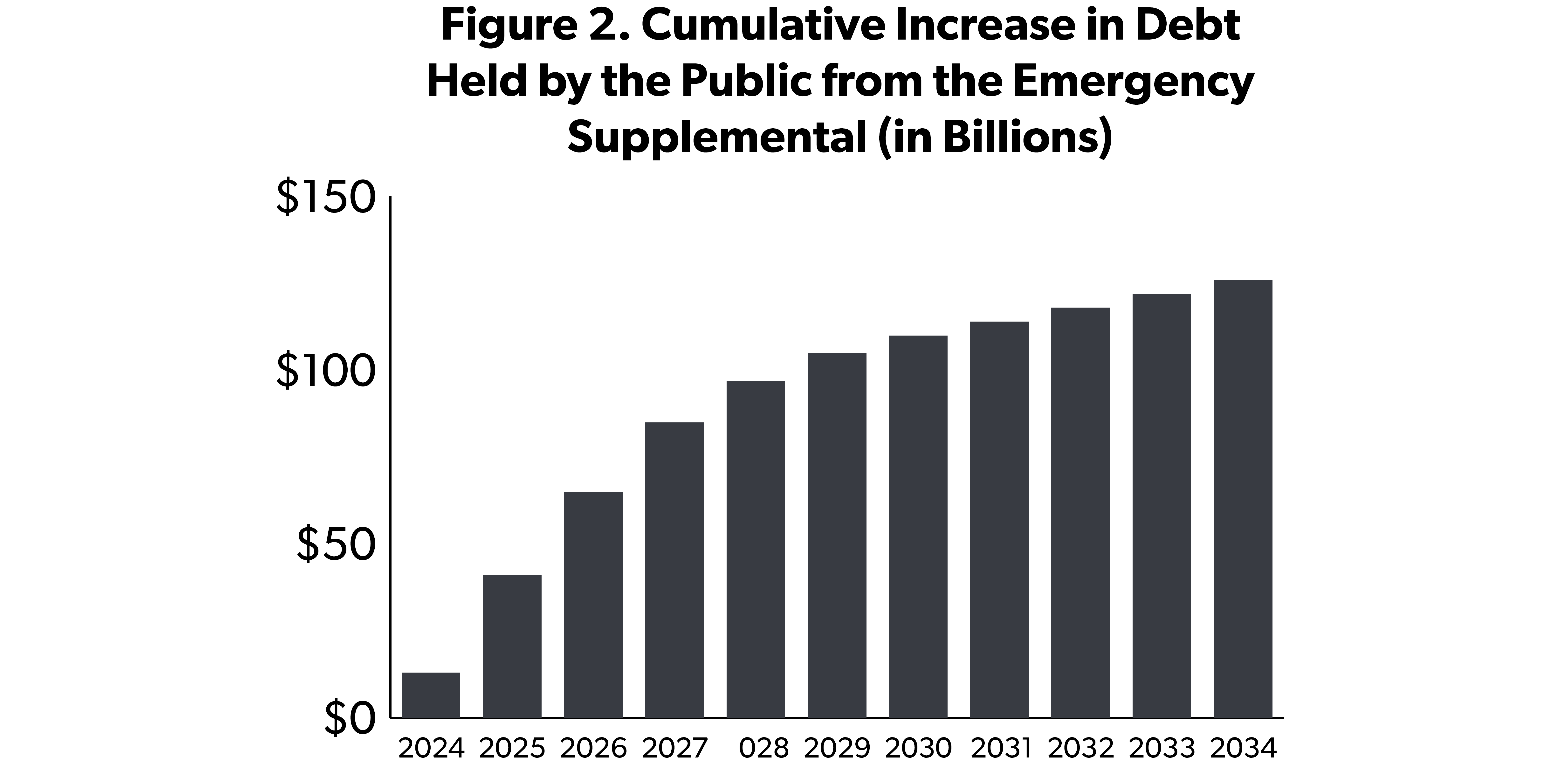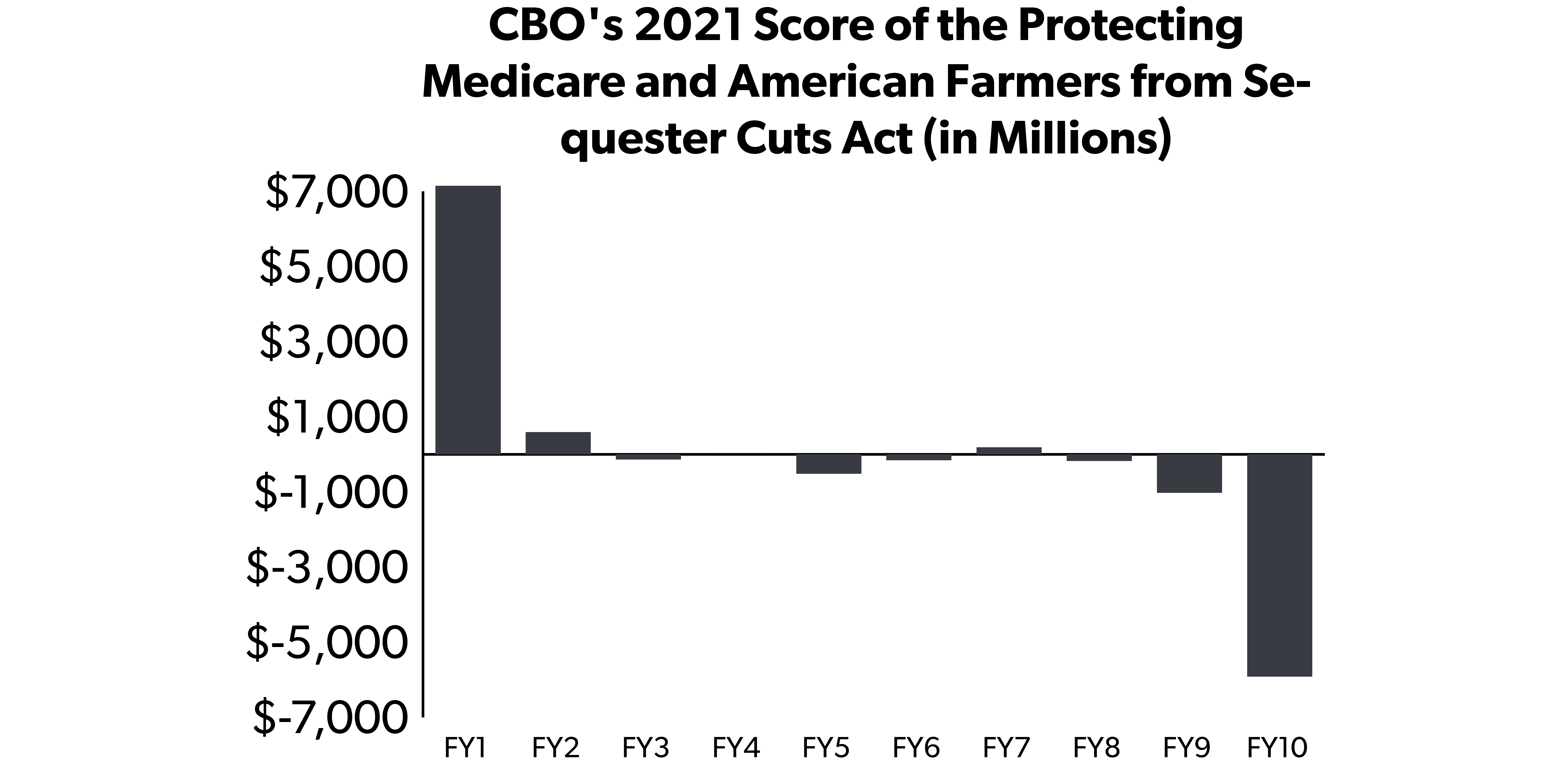Introduction
After months of debate, in late April Congress enacted an emergency supplemental package providing assistance to Ukraine, Israel, and Taiwan. The net spending in the law adds $95 billion to the debt through 2033. But the real cost is much higher than that, coming in at a total deficit impact of $126 billion when taking into account $31 billion in higher debt service costs.
Under budget rules set by Congress, debt service costs are left out of the official scores produced by the Congressional Budget Office (CBO). However, CBO has produced an interactive worksheet so that people can see how changes in spending and revenues would increase or decrease the costs to finance the federal debt. Lawmakers should reform the budget rules to require CBO to include debt service in its cost estimates for scorekeeping purposes.
Legislation introduced by Representative Michael Cloud (R-TX) would make this standard. This would provide a more comprehensive score of budget proposals and given the availability of the spreadsheet, would be easily implemented by CBO with its existing resources.
CBO’s Scores of the Package
H.R. 815 was signed into law on April 24, the same day it was passed by the Senate. The supplemental package is separated out over 20 divisions, each of which CBO has completed separate cost estimates for. In total, the scored sections increase outlays by nearly $100 billion and increase revenues by a little over $5 billion. This would add $94.9 billion to the deficit through 2033, as Table 1 shows. The other sections either had no cost or CBO determined that their individual fiscal impact would be insignificant.

Accounting for the Debt Service Costs
Because the spending levels in the law vastly exceed its new revenues, the Department of the Treasury will have to borrow money to make up the difference. This will then increase the costs to finance the debt, which in turn fuels higher deficits into the future. As the Congressional Research Service emphasized in a report on the federal debt:
If budget deficits continue to rise, thereby causing more resources to be devoted to paying interest on the debt, there will be fewer funds available to spend on other federal programs, all else equal.
In CBO’s 2024 budget outlook, debt service costs were $659 billion in 2023 and are on track to more than double to $1.6 trillion by 2034. Given the rate of growth in the federal debt, the impacts on costs to service that debt should be considered along with the underlying outlay and revenue estimates in CBO’s scores. This additional data shows the full fiscal impact of bills out of Congress. But unfortunately, they are not included in the official budget scores that CBO produces.
Thankfully, CBO’s interactive tool allows anyone to see how changes in spending or revenues will impact debt service costs. Plugging the annual changes from Table 1 reveals that the net deficit impact of the emergency supplemental rings up at a total of $126 billion, or $31 billion higher than advertised.
Through the same budget window as CBO’s scores for the divisions of the supplemental, the debt service costs are $27.4 billion, but CBO’s interactive spreadsheet includes an additional year with nearly $4 billion in higher debt service costs. This helps to illustrate how the debt interest costs will continue on and impose burdens on future taxpayers long after the $95 billion in the supplemental has been spent.



Reform Legislation Would Account for Debt Service Costs
Rep. Cloud’s Cost Estimates Improvement Act would require that CBO include the estimated impact of proposed legislation on debt interest payments in its estimates, and include a duplication report in its estimates to identify existing federal programs that overlap with new proposals.
Along with accounting for the full fiscal impact of legislation, another positive of the bill is that CBO’s interactive spreadsheet shows that this could be implemented without adding a significant work burden on the agency.
Another benefit is that it could help expose the limitations of various budget gimmicks that are often employed in bills to game CBO’s scoring methods. For example, the Protecting Medicare and American Farmers from Sequester Cuts Act of 2021 prevented sequestration (automatic spending reductions) to Medicare in 2022 and then extended sequestration in 2030 and 2031. Along with an increase in Medicare payment rates for physician service and two other provisions, CBO determined that the law increased spending by over $7.1 billion in 2022 and the major offsets to “pay for” this were scored for years 2030 and 2031.

Plugging the annual changes in spending in from that law into CBO’s new calculator to see debt service costs show that it would need more savings to fully offset the higher spending (though the net cost at the time would have been shown to be lower when CBO made the estimate because of lower interest rates at the time).

While requiring debt service impact estimates would not prevent the use of budget tricks like those in the Protecting Medicare and American Farmers from Sequester Cuts Act, it would bring more transparency to the actual costs of efforts to game CBO’s scoring methodology.
Conclusion
Lawmakers should assess the full budgetary impact of the bills before they are voted on in the House or Senate. Rep. Cloud’s bill requiring CBO to include debt service costs as part of its official cost estimates would fill in important fiscal data that is currently missing from the status quo scoring rules.

